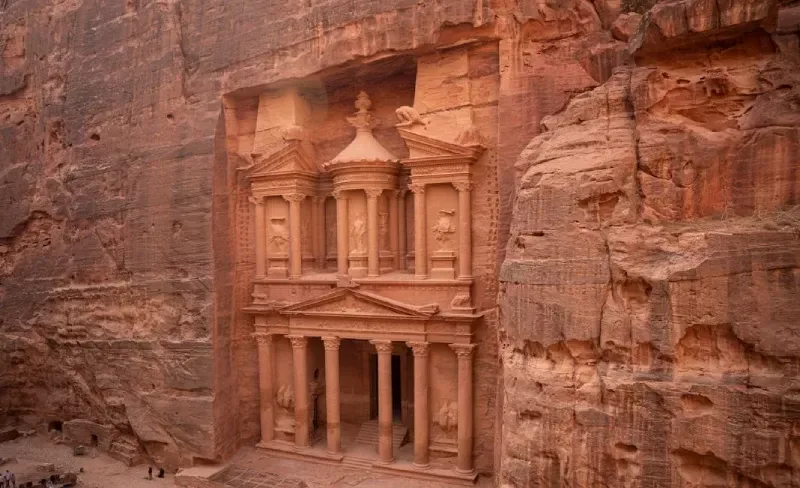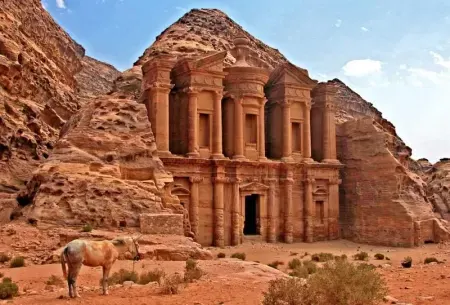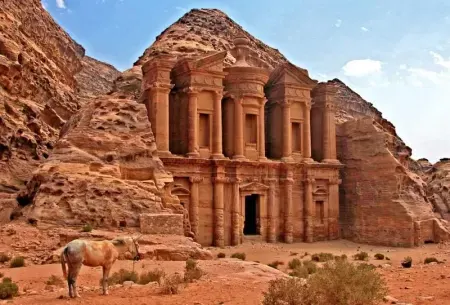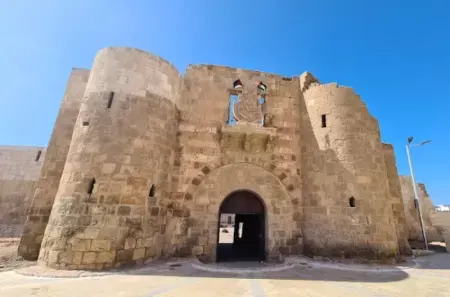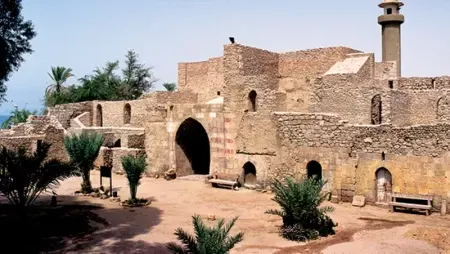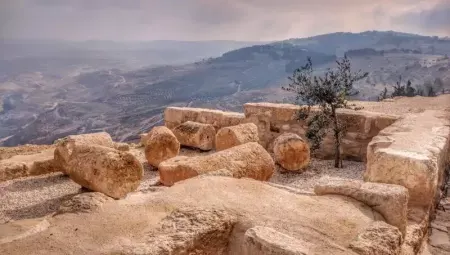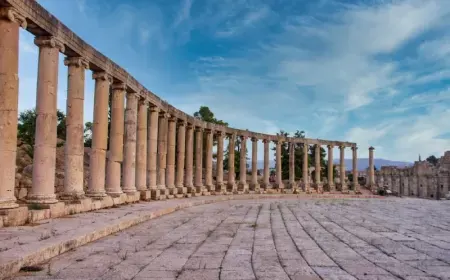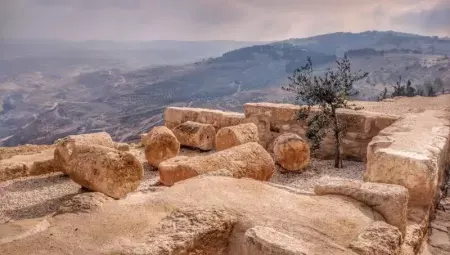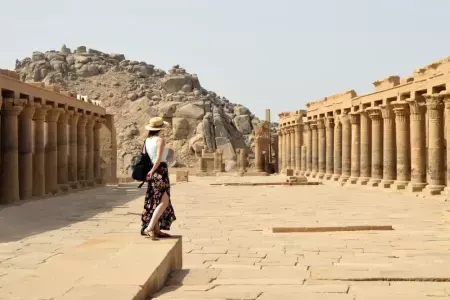Nestled amidst the rugged mountains and rose-red cliffs of southern Jordan, the ancient city of Petra stands as a testament to human ingenuity and architectural prowess. Often referred to as the "Rose City" due to the pink hue of its stone structures, Petra is a UNESCO World Heritage Site and one of the New Seven Wonders of the World. This archaeological treasure, with its breathtaking tombs, temples, and monuments, offers a captivating glimpse into the history and culture of the Nabataean civilization.
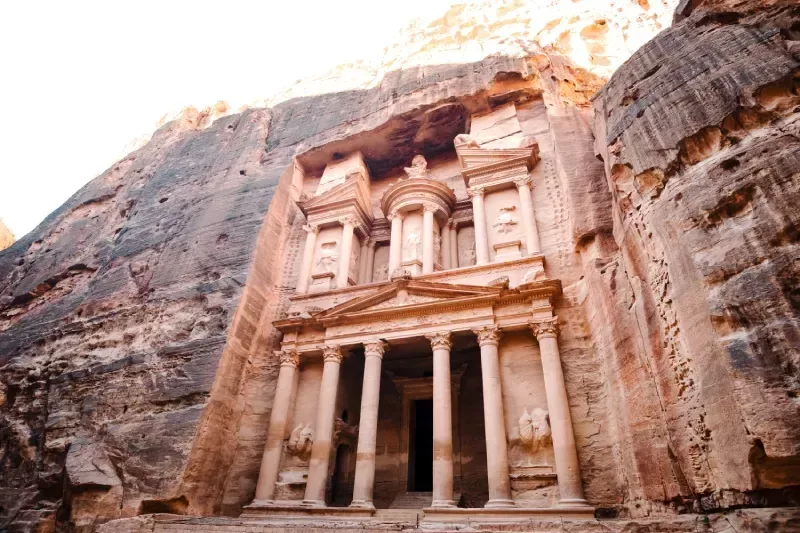
Nestled amidst the rugged mountains and rose-red cliffs of southern Jordan, the ancient city of Petra stands as a testament to human ingenuity and architectural prowess. Often referred to as the "Rose City" due to the pink hue of its stone structures, Petra is a UNESCO World Heritage Site and one of the New Seven Wonders of the World. This archaeological treasure, with its breathtaking tombs, temples, and monuments, offers a captivating glimpse into the history and culture of the Nabataean civilization.
The History of Petra
Petra's origins date back to the 5th century BC when it was established as the capital of the Nabataean Kingdom. The Nabataeans were a sophisticated Arab civilization known for their architectural ingenuity and control over the region's trade routes. Carving their city into the sandstone cliffs, they created a thriving metropolis that became a hub for commerce and culture.
The city flourished until the Roman annexation in AD 106, which began its decline. Over the centuries, Petra was forgotten by the outside world until its discovery by Swiss explorer Johann Ludwig Burckhardt in 1812. Today, Petra stands as a testament to the ingenuity and artistry of the Nabataeans, drawing visitors from around the globe.
Architectural Marvels of Petra, Jordan
One of Petra's most iconic landmarks is Al-Khazneh, or "The Treasury."
Al-Khazneh carved into a towering sandstone cliff, this magnificent facade stands 40 meters tall and is decorated with intricate carvings and sculptures. Despite its name, the true purpose of Al-Khazneh remains a mystery, with theories suggesting it served as a royal tomb or a temple.
Another awe-inspiring structure is Ad Deir, or "The Monastery." Reached by climbing over 800 steps, this colossal monument is larger than The Treasury and offers panoramic views of the surrounding valleys. The Monastery's vast courtyard and grand facade make it a favorite spot for visitors seeking to capture the essence of Petra's grandeur.
The Siq: A Dramatic Entrance
Visitors to Petra begin their journey through the Siq, a narrow, winding gorge that serves as the main entrance to the city. Flanked by towering cliffs that reach up to 80 meters high, the Siq is a natural geological wonder in itself. As you walk through this mystical pathway, the anticipation builds until you catch your first glimpse of The Treasury, a sight that leaves many breathless with its sheer beauty.
Beyond the Monuments
While Petra's monumental facades are undoubtedly its main attraction, the site offers much more to explore. The ancient city spans over 264,000 square meters, with numerous tombs, temples, and dwellings waiting to be discovered. The Royal Tombs carved into the rock face with elaborate facades and the Roman-style Theatre, capable of seating over 4,000 spectators, provide insight into the cultural and social life of Petra's inhabitants.
Preservation and Tourism
Today, Petra is Jordan's most visited tourist attraction, drawing hundreds of thousands of visitors each year. Efforts to preserve and protect this invaluable heritage site are ongoing, as the delicate sandstone structures are vulnerable to natural erosion and human impact. Sustainable tourism practices and archaeological research are essential to ensure that Petra remains a source of wonder and inspiration for future generations.
Getting to Petra
Reaching Petra is an adventure in itself. Most travelers start their trip from Amman, Jordan's bustling capital, or Aqaba, a port city on the Red Sea. From Amman, Petra is approximately a three-hour drive south. Various transportation options are available, including guided tours that provide insights into the region's history and culture.
The Best Time to Visit Petra
The best time to visit Petra is during the spring (March to May) and autumn (September to November) when the weather is mild and pleasant. Summers can be hot, with temperatures often exceeding 100 degrees Fahrenheit, while winters can be cold and rainy. To avoid the peak tourist crowds, consider visiting during the shoulder seasons of December to February or June to August.
Exploring Petra, Jordan: Must-See Sites
Petra is vast, with countless sites to explore. Key attractions include:
- The Treasury (Al-Khazneh): This iconic structure, carved into a towering rock face, is the most famous image of Petra. Its intricate façade and grand scale leave visitors in awe.
- The Monastery (Ad-Deir): Perched atop a challenging ascent of 800 steps, the Monastery rewards hikers with its impressive architecture and panoramic views of the surrounding landscape.
- The Royal Tombs: A series of grand tombs carved into the cliffs, showcasing the wealth and artistry of Petra's ancient inhabitants.
- The High Place of Sacrifice: A sacred site offering spectacular views of the entire city, accessed by a steep climb.
- The Great Temple: An expansive archaeological site that reveals the grandeur of Petra's public buildings.
Accommodation Options in Petra, Jordan
Petra offers a range of accommodation options to suit all budgets and preferences. From luxurious resorts to cozy guesthouses, travelers can find the perfect place to rest after a day of exploration. Many accommodations are conveniently located near the entrance to Petra, making it easy to access the site.
-
Luxury Stay: For those seeking luxury, the Mövenpick Resort Petra provides top-notch amenities and is just steps away from the main entrance. With comfortable rooms, a swimming pool, and multiple dining options, it ensures a relaxing stay.
-
Budget-Friendly Options: Travelers on a budget, can choose from a range of guesthouses and hostels that offer basic yet comfortable accommodations. These options are ideal for those who prioritize savings without compromising on convenience.
Local Cuisine and Dining in Petra
Jordanian cuisine is a highlight of any visit to Petra. Visitors can savor traditional dishes like mansaf (lamb with rice and yogurt sauce) and falafel (chickpea fritters), as well as a variety of other Middle Eastern delicacies. Petra boasts an array of dining options, from casual cafes to fine dining restaurants, ensuring that every palate is satisfied.

Practical Information
Petra is located about 240 kilometers south of Amman, Jordan's capital, and can be reached by car or bus. The nearby town of Wadi Musa offers a range of accommodations, from budget-friendly hostels to luxury hotels. To fully experience Petra, it is recommended to spend at least two days exploring the site. Early mornings and late afternoons are ideal times to visit, as the soft sunlight enhances the natural beauty of the rose-red stone.
Conclusion
A visit to Petra is a journey through time, an opportunity to walk in the footsteps of the ancient Nabataeans and marvel at their architectural and engineering achievements. Whether you're an avid history buff, an architecture enthusiast, or a curious traveler, Petra's timeless charm and grandeur will leave an indelible mark on your heart and mind.
